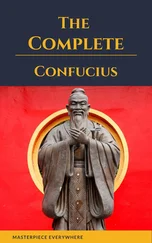All these claims except one are perfectly illustrated in his story of the tragic love affair of Giulio Branciforte and Elena de’ Compireali. The remark about long conversations, however, is a flat contradiction of what he wrote, the way he wrote it, and of the resulting spell he cast in The Abbess of Castro .
Marie-Henri Beyle, best known by his favourite pen name Stendhal, was born in Grenoble on 23 January 1783. His immediate family was pious, royalist, and firmly conservative, whereas from an early age young Beyle came to despise convention, was an atheist, and, as a follower of Napoleon, a fervent advocate of the French Revolution.
The details of his life, the range of his experiences, his tireless travels, are truly extraordinary. He adored women and had countless women friends and lovers, none forgettable, none forgotten, and all his liaisons ultimately unsuccessful; he never married. He understood women and wrote about them in a way that is revolutionary and still unmatched. His female characters Madame de Rênal and Mathilde de la Mole ( The Red and the Black ), Gina Sanseverina and Clelia Conti ( The Charterhouse of Parma ), Vittoria Carafa and Elena de’ Campireali ( The Abbess of Castro ), and even Lamiel in the author’s last and unfinished eponymous novel, are among the greatest creations in all literature.
Beyle left Grenoble for Paris at the end of 1799, whereupon influential relatives got him a post as a lowly clerk in the Ministry of War. He was only seventeen when in May 1800 he was allowed to follow Napoleon’s army into Italy, where he found a position doing clerical work for the governor of Lombardy. Here he fell in love with Italy, with Italian opera, with Milan, and was enthralled by the city’s relaxed atmosphere. Later he was to write, ‘were I to follow nothing but my inclination, I should never set foot outside Milan.’ By September he was appointed a sub-lieutenant in the dragoons (without knowing how to ride a horse) and aide-de-camp of General Claude Michaud.
Thus began a farcical army career, which he really detested, but that allowed him to witness battles in Austria, Germany, and Russia. In 1812 he saw the torching of the Russian capital and soon after joined in the French army’s ill-fated retreat from Moscow.
After the fall of Napoleon Beyle retired to Italy, where he lived the life of a penurious dilettante and began to write. His first books, lives of Haydn, Mozart, and Metastasio, and a history of Italian painting, were largely cribbed compilations – a practice widespread at the time – that he signed with different pen names. It is said that, as a form of protective cover, Beyle used in his life and in his writing up to a hundred different pseudonyms.
There followed a series of travel books on Italy, whose cities and towns he explored and researched assiduously. The chatty volume Rome, Naples et Florence en 1817 was his first success as an author; the French text was reissued in London in 1817, and the next year appeared in an English translation. This was the earliest of his books to bear the pen name Stendhal. In 1822 he published a semi-didactic, semi-autobiographical dissertation on love.
Armance , the first of his novels, appeared in 1827, followed three years later by The Red and the Black . In 1830 he entered the civil service and was appointed consul at Civitavecchia. The post he really coveted was at Austrian Trieste, but Stendhal’s association with Italian patriots who were plotting for national independence made him a persona non grata with the Austrians, and he was turned down. With little else to do in sleepy Civitavecchia, he began the novel Lucien Leuwen , which he left unfinished and which remained unpublished until 1894. From 1836 to 1839 he took sick leave and returned to Paris, where he began a life of Napoleon and completed two more novels, The Charterhouse of Parma and The Abbess of Castro .
For a while Stendhal supported himself by journalism, writing cultural articles for three or four English reviews. He also kept a diary and undertook a series of autobiographical writings, all unpublished in his lifetime. His fiction, while admired by a small circle of literary figures such as Balzac and Mérimée, did not sell, and the general public found his work incomprehensible and eccentric. The proverbial outsider, he himself predicted that his books would only be discovered and read fifty years after his death. This proved an uncannily accurate assessment.
Beyle died in Paris on 23 March 1842 and was interred in Montmartre cemetery. It is said that three persons attended the funeral.
Susan Ashe’s translation, designed for the contemporary reader, concentrates on the narrative drive and drama of each story. This has meant taming a number of the author’s excesses. Stendhal, who wrote and dictated with notorious speed, is guilty in descriptive passages of the careless repetition of words and phrases that today we find only clumsy and annoying. Another peccadillo, eliminated in the current version, is his now pointless footnotes that translate for us the value of items in terms of French currency of the 1830s. Also eliminated are footnoted references to obscure works such as Montesquieu’s Politique de Romains dans la religion or Saint-Simon’s Mémoires de l’abbé Blache , which it is doubtful any reader today would trouble themselves over. The chief items to have been pruned, however, are the repeated references in The Abbess of Castro by which Stendhal sought to convince us that the story is not his but the work of Florentine and Roman antiquarians. These passages are both feeble and unconvincing.
Of course, the above confessions will offend purists. The field of translation is awash with quibbles regarding purity and fidelity. A good translation, however, does not try to duplicate the original but strikes out on its own. Anyone wishing to read Stendhal untouched and unadulterated can do so ungrumblingly in the author’s native French.
‘Vittoria Accoramboni’ was first published, unsigned, in La Revue des deux mondes , 1 March 1837. It should be pointed out that Webster’s 1612 play The White Devil was based on this same story.
‘Les Cenci’, also unsigned, made its first appearance in La Revue des deux mondes , 1 July 1837.
‘L’Abbesse de Castro’, under the pen name F. de Lagenevais, saw first light in La Revue de deux mondes , 1 February and 1 March 1839. When The Abbess was published in book form the author’s name appeared as Stendhal.
Stendhal’s works are currently issued, with more to come, in seven volumes in the Bibliothèque de la Pléiade.
Norman Thomas di Giovanni
Keyhaven, Lymington
Hampshire
January 2012
THE ABBESS OF CASTRO
Sixteenth-century Italian brigands have so often been depicted in melodrama, and so many people have talked about them without knowing anything, that our impression of these outlaws is now utterly false. Broadly speaking, they could be called the opposition to the appalling governments which, in Italy, followed upon the medieval republics. A defunct republic’s richest citizen generally became the new tyrant, and, to curry favour with the common people, he would lavish on a town fine paintings and magnificent churches.
Of such were the Polentini clan of Ravenna, the Manfredi of Faenza, the Riario of Imola, the Cani of Verona, the Bentivoglio of Bologna, the Visconti of Milan, and last – the least martial but most hypocritical of all – the Medici of Florence. None of the historians of these small principalities dared mention the countless poisonings and assassinations that the fear gripping these petty tyrants demanded, for all these earnest chroniclers were in their pay. When we realize that each of the tyrants knew intimately each of the republicans who hated him (the Tuscan Grand Duke Cosimo, for instance, was well acquainted with Strozzi) and that many of these tyrants were themselves assassinated, we can fathom the deep hatred and endless distrust that endowed sixteenth-century Italians with such spirit and courage and their artists with such inspiration.
Читать дальше












